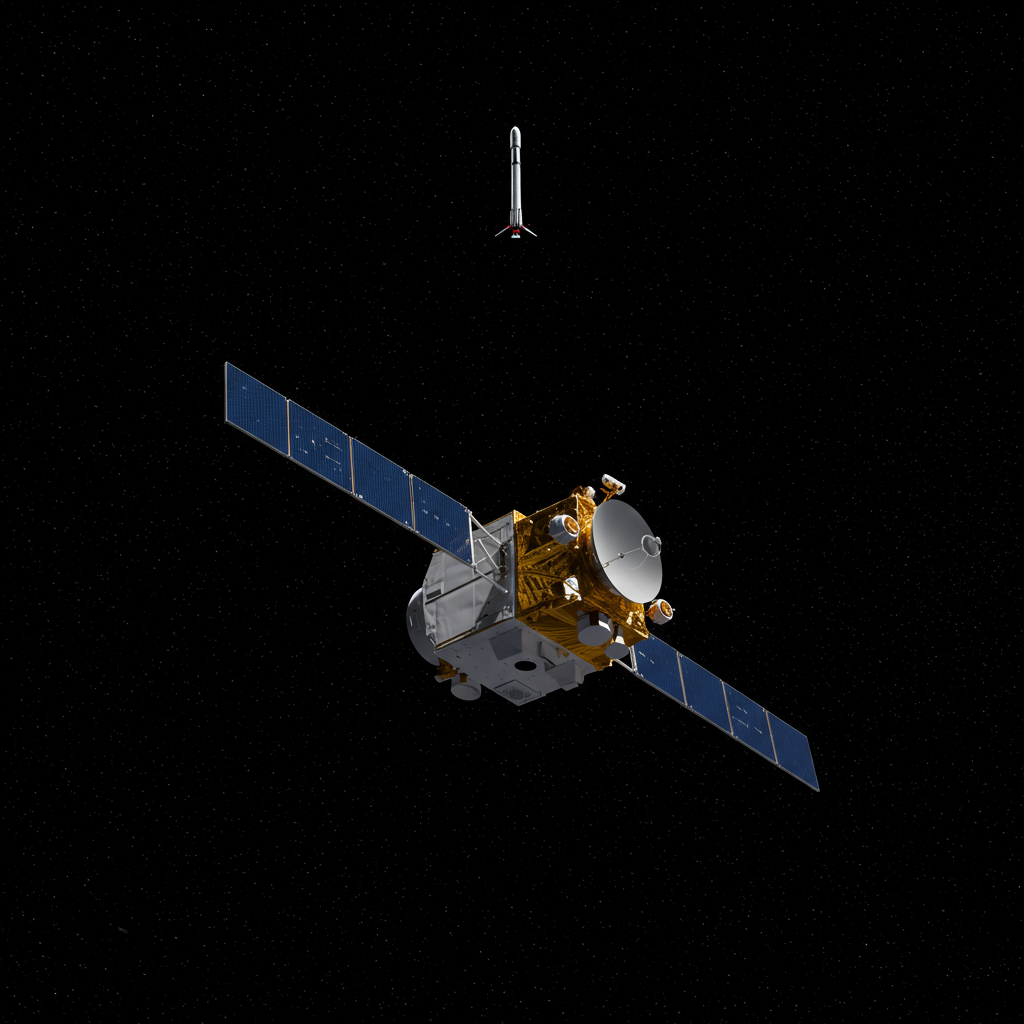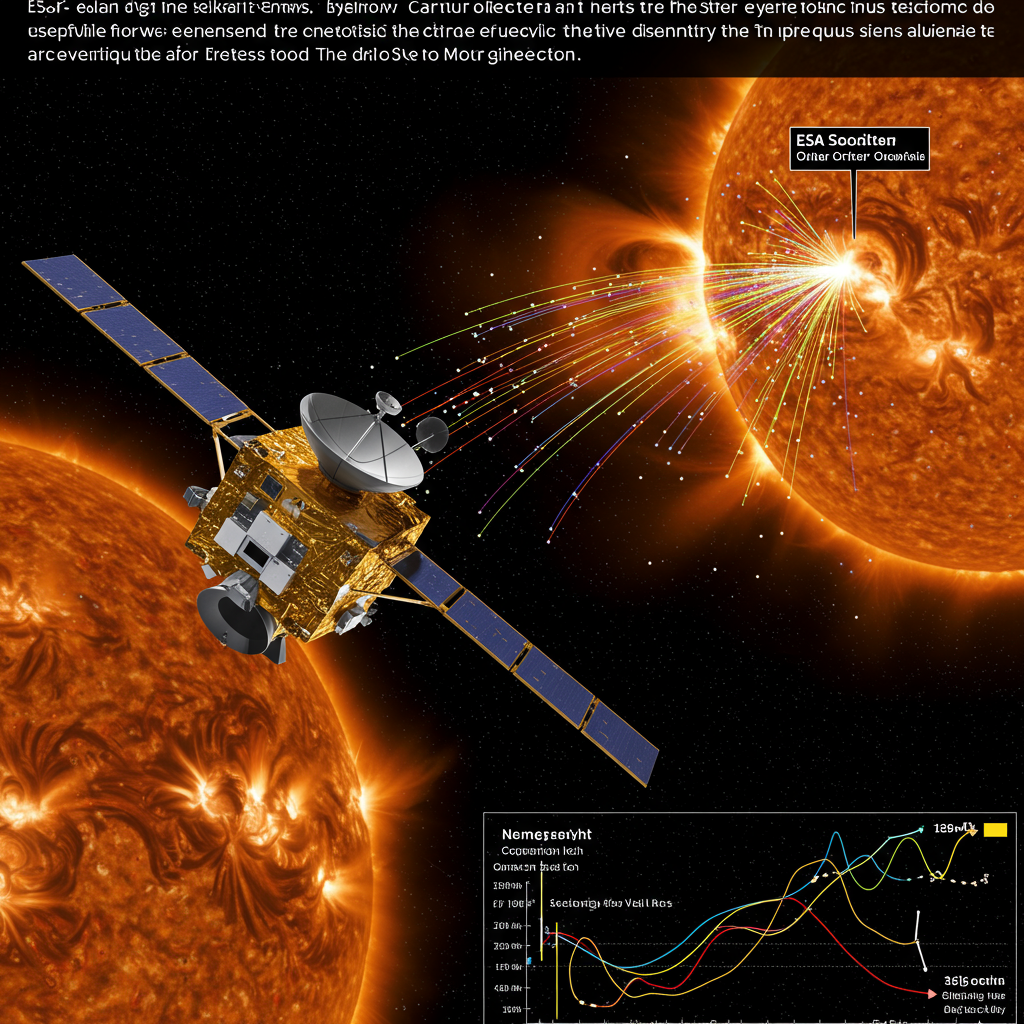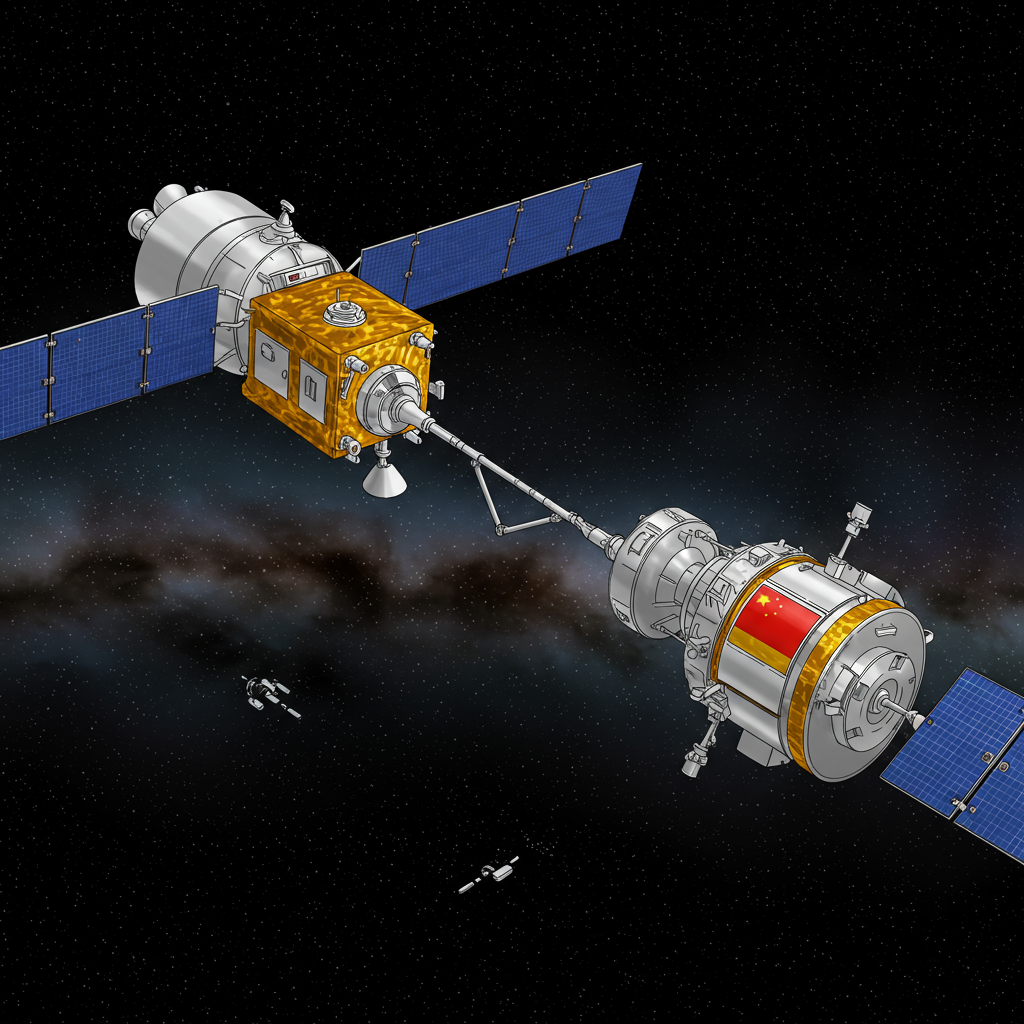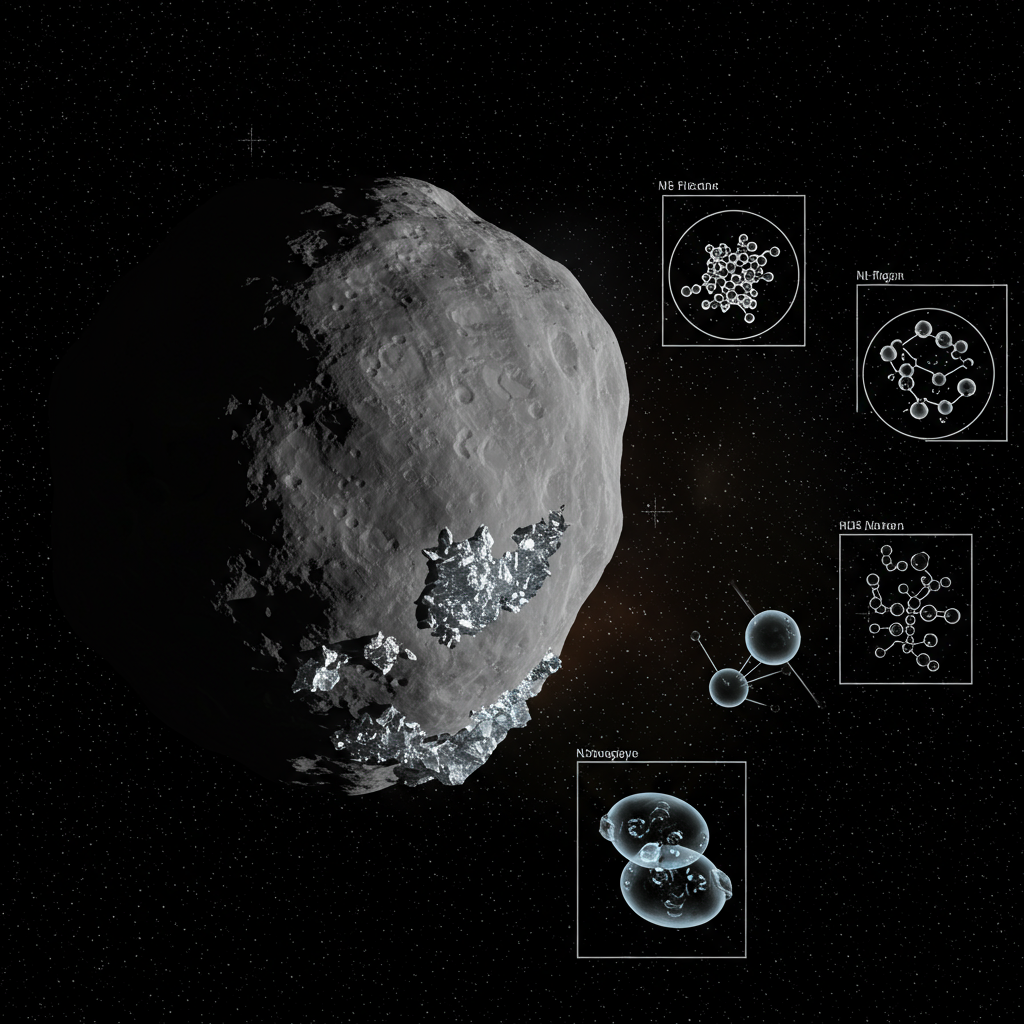Israel’s newest satellite is soaring through space, but its true impact extends far beyond orbit. The successful launch of the 4.5-ton Dror-1 communications satellite marks a pivotal moment. Placed into geostationary transfer orbit by Israel Aerospace Industries (IAI) aboard a SpaceX Falcon 9 rocket, Dror-1 represents more than just technological prowess; it signals a critical juncture for the nation’s strategic future.
This launch highlights the urgent need for a comprehensive, funded national space strategy. Such a plan must expertly balance Israel’s vital defense requirements with ambitious scientific pursuits and burgeoning commercial opportunities. In a rapidly evolving geopolitical landscape where technology is increasingly weaponized, securing an independent and advanced space capability is no longer optional – it is essential for sovereignty and economic prosperity.
Space: A Critical Layer for National Security
Recent conflicts underscore the vulnerability of ground-based infrastructure. Cyberattacks, electronic jamming, and missile strikes pose significant threats to conventional communication networks. Hovering at an altitude of 36,000 kilometers, Dror-1 offers an independent, highly resilient communication backbone.
This jam-resistant capability is indispensable for defense networks, emergency services, and critical national infrastructure. It ensures reliable communication even when ground systems are compromised. The satellite is designed to meet Israel’s communication needs for years to come, providing a secure lifeline in times of crisis.
The strategic advantage of space-based assets in defense is increasingly recognized globally. Concepts like the proposed U.S. “Golden Dome” missile defense system envision multilayered defenses leveraging space-based sensors and interceptors. This focus on altitude for early interception highlights the strategic imperative to own and operate assets high above the battlefield. While such systems are complex and expensive, they demonstrate the direction of modern defense strategy. Investing in sovereign space assets like Dror-1 aligns with this global trend towards enhancing resilience and defense capabilities through space.
Beyond Defense: The Commercial Frontier
While Dror-1’s defense utility is clear, its value extends significantly into the commercial realm. Global demand for geostationary communications satellites is experiencing a resurgence. Nations worldwide seek sovereign broadband access, reliable connectivity for disaster response, and robust channels for the growing “Internet-of-Things.”
Israel, with its history as a space pioneer dating back to the 1988 Ofek-1 launch, is uniquely positioned to capitalize on this market. The nation possesses expertise in niche areas. These include turn-key satellite solutions bundled with cyber-hardened ground stations, advanced AI-powered analytics, and constellations capable of rapid-revisit imaging.
Each international contract secured following launches like Dror-1 translates directly into tangible economic benefits. It creates high-value engineering jobs, generates tax revenue, and provides longer financial runways for domestic research and development. This is particularly vital for sustaining innovation after costly defense operations that strain the national budget. Space commerce represents a lucrative avenue for economic growth and technological advancement.
Navigating the Age of Technonationalism
The global landscape is shifting towards what is termed “technonationalism.” This involves states actively intervening to protect and promote their domestic high-tech industries. Driven by increased great-power competition, this era sees economic interconnectedness used for strategic advantage. Countries are focusing on “strategic autonomy” in critical sectors.
This trend is amplified by the rapid rise of nations like China as leading innovators in advanced industries. China’s strategic focus, significant R&D investment, and large domestic market are transforming the global technology race. To compete effectively in this “techno-economic war,” nations like Israel must adopt a proactive, state-supported approach to developing and safeguarding key technological capabilities, including space.
Leveraging commercial launch providers like SpaceX, as Israel did for Dror-1, is a pragmatic approach in this competitive environment. Rather than expending scarce national resources on booster development, Israel can focus its investment on payload innovation – the satellite itself. This is where strategic autonomy truly lies. It allows nations to tap into the most cost-effective access to orbit while owning the critical technological asset performing the mission. This approach mirrors how even major space agencies like NASA and ESA utilize commercial launch services.
The Resilience Blueprint
The development story of Dror-1 itself serves as a powerful testament to Israeli resilience and provides valuable lessons for policymakers. Hardware design pressed forward amidst COVID-19 lockdowns. Integration work paused during periods of conflict. Teams navigated complex international logistics, moving between vacuum chambers in Munich and clean rooms at Cape Canaveral. All this occurred while facing security threats.
That the project reached its launch pad on schedule despite these significant disruptions highlights a robust industrial ecosystem. This ecosystem refuses to be paralyzed by crisis. It also underscores a crucial point for government strategy: deep-tech programs, especially those critical for national security and economic future, require multi-year, ring-fenced budgets. These budgets must be shielded from short-term political fluctuations or coalition negotiations. If space R&D can be protected, this model can potentially be applied to safeguard other vital national sectors.
Space as a Tool of Soft Power
Maintaining a qualitative military edge in a changing Middle East is a constant challenge for Israel. Its neighbors are acquiring increasingly sophisticated military technology. One powerful answer lies literally “playing higher.”
An Israeli-built satellite positioned over regions like Africa or Southeast Asia acts as a constant ambassador. It beams essential services like television programming, telemedicine capabilities, and secure encrypted data to nations in need of reliable bandwidth. Such technological assistance builds soft power and goodwill far more effectively than traditional diplomatic cables alone. This opens doors for future follow-on exports. These exports include advanced optical payloads, smaller mini-satellites, secure modems, and even specialized launch insurance services. These are fields where Israeli start-ups already demonstrate significant excellence.
Despite its global reputation as the “Start-Up Nation,” Israel currently underperforms in the global space commerce market relative to its potential. Other nations are actively marketing their space capabilities internationally. France promotes Airbus satellites, Turkey sells Göktürk platforms, and South Korea is courting customers for lunar landers. Israel has the innovation and technology; it needs a coordinated national effort to translate this into greater global market share.
The Call for a National Space Strategy
The successful Dror-1 launch must serve as a catalyst, not a culmination. Jerusalem needs to urgently publish, publicly debate, and, most critically, fund an integrated National Space Strategy extending through 2040. This strategy must explicitly balance defense, commercial, and scientific objectives.
A robust strategy would include clear, measurable benchmarks. These could encompass annual space export targets, a specific percentage of GDP allocated to space R&D investment, and initiatives to promote diversity within the space industry workforce. Such concrete goals provide direction and accountability. They signal a serious, long-term commitment to realizing Israel’s full potential in space.
Dror-1’s name, meaning freedom in Hebrew, is deeply symbolic. It launched in a period where adversaries sought to disrupt daily life through missile threats. While the rocket plume dissipated quickly, the satellite’s strategic and economic value will endure for decades. This is contingent, however, on government and industry treating the launch as a starting gun for future endeavors, not a moment to rest on past successes.
Adversaries invest in technologies designed to regress the nation. The strategic response must involve positioning Israeli hardware in domains beyond their reach. This altitude must be converted into tangible diplomatic leverage and sustained economic growth. Space is no longer merely the “final frontier” explored for scientific curiosity. It is the definitive next marketplace and critical arena for strategic competition.
Dror-1 demonstrates Israel’s capability to thrive in this new environment. The crucial decision now is whether Sunday’s launch was an isolated achievement or the dawn of a sustained export era. This era could propel Israel, and its global partners, towards a more connected, secure, and prosperous future powered by space technology.
Frequently Asked Questions
What is the strategic importance of Israel’s Dror-1 satellite launch?
The launch of Dror-1 is strategically vital because it provides Israel with an independent and jam-resistant communication network from space. This is crucial for national security, especially in conflict situations where ground systems are vulnerable to cyberattacks or missile strikes. Dror-1 ensures reliable communications for defense, emergency responders, and critical infrastructure, enhancing Israel’s resilience and strategic autonomy in a volatile region.
What specific goals should Israel’s national space strategy prioritize?
A comprehensive national space strategy for Israel should prioritize balancing defense, commercial, and scientific objectives through 2040. It needs dedicated, long-term funding independent of short-term political cycles. Key components should include establishing clear benchmarks, such as annual export targets for space technologies, setting a specific percentage of GDP for space R&D investment, and actively promoting workforce diversity within the space industry.
How does investing in Israel’s space sector benefit its economy?
Investing in the space sector generates significant economic benefits. Developing and exporting space technologies like satellites and ground systems creates high-skilled engineering jobs and generates tax revenue. Successful missions demonstrate capabilities, leading to international contracts for turn-key solutions and follow-on sales of related technologies (payloads, modems, services). This fuels domestic R&D, promotes soft power, and positions Israel to capture market share in the growing global space commerce industry.




